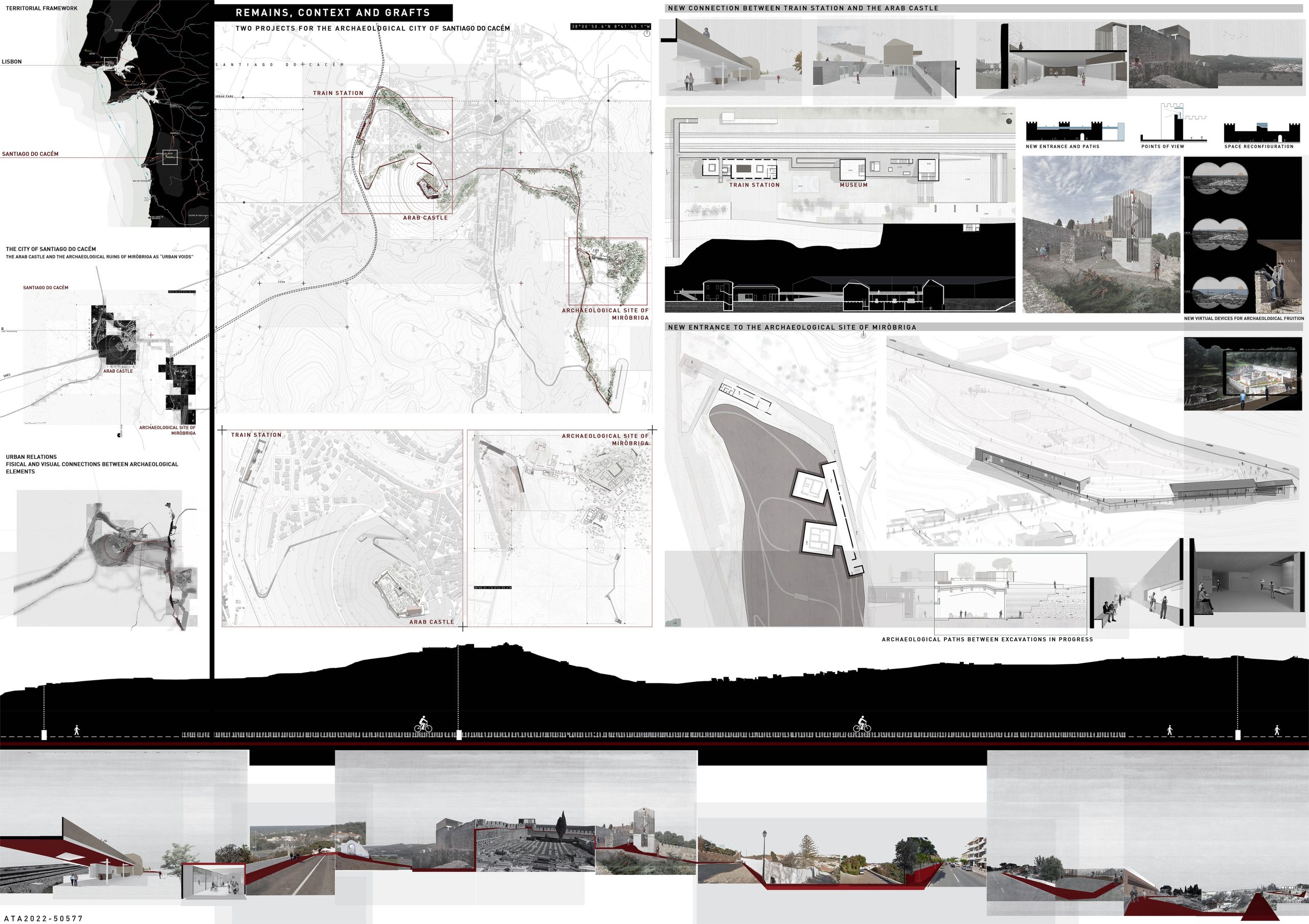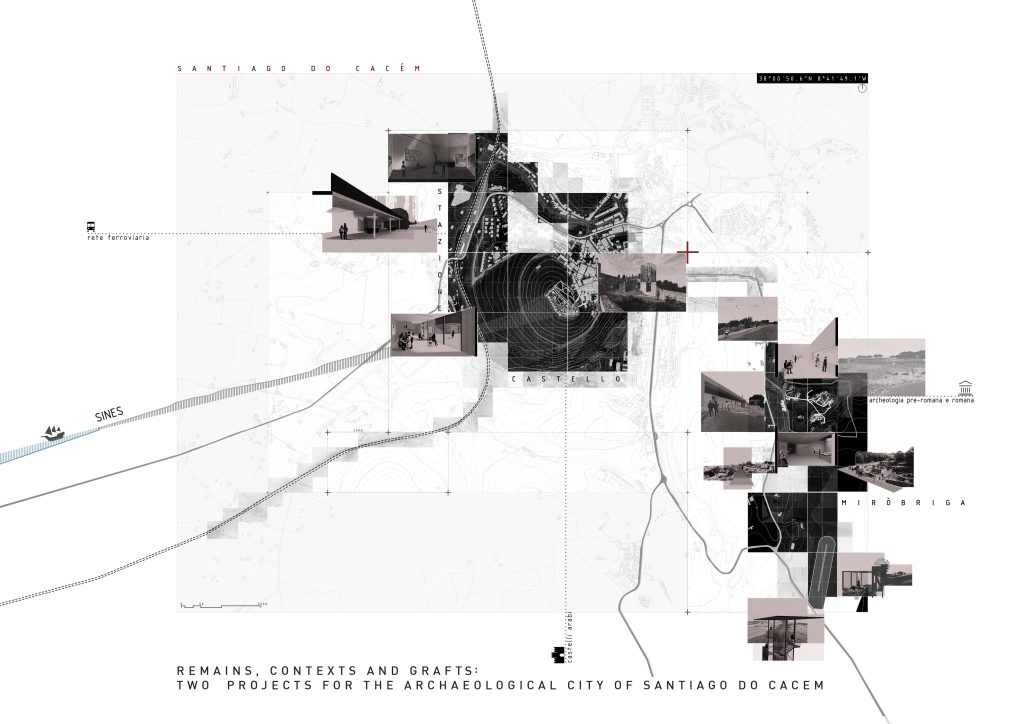“Ruins are the style of our future cities / Future cities are themselves ruins / Our contemporary cities, for these reasons too”.
Ruins constitute our future, the starting point for a city that will be built from what still remains of it. It seems possible to consider the city as a “big machine in ruins” which constantly changes and stratifies over time, incorporating within itself the multiplicity of heritage, but also the meanings of the place. These issues have been addressed in a research design carried out between Italy and Portugal, at the University of Naples “Federico II” and the University of Evòra, through the exploration of the case study of the city of Santiago do Cacém, currently stuck in a condition of “immobility.
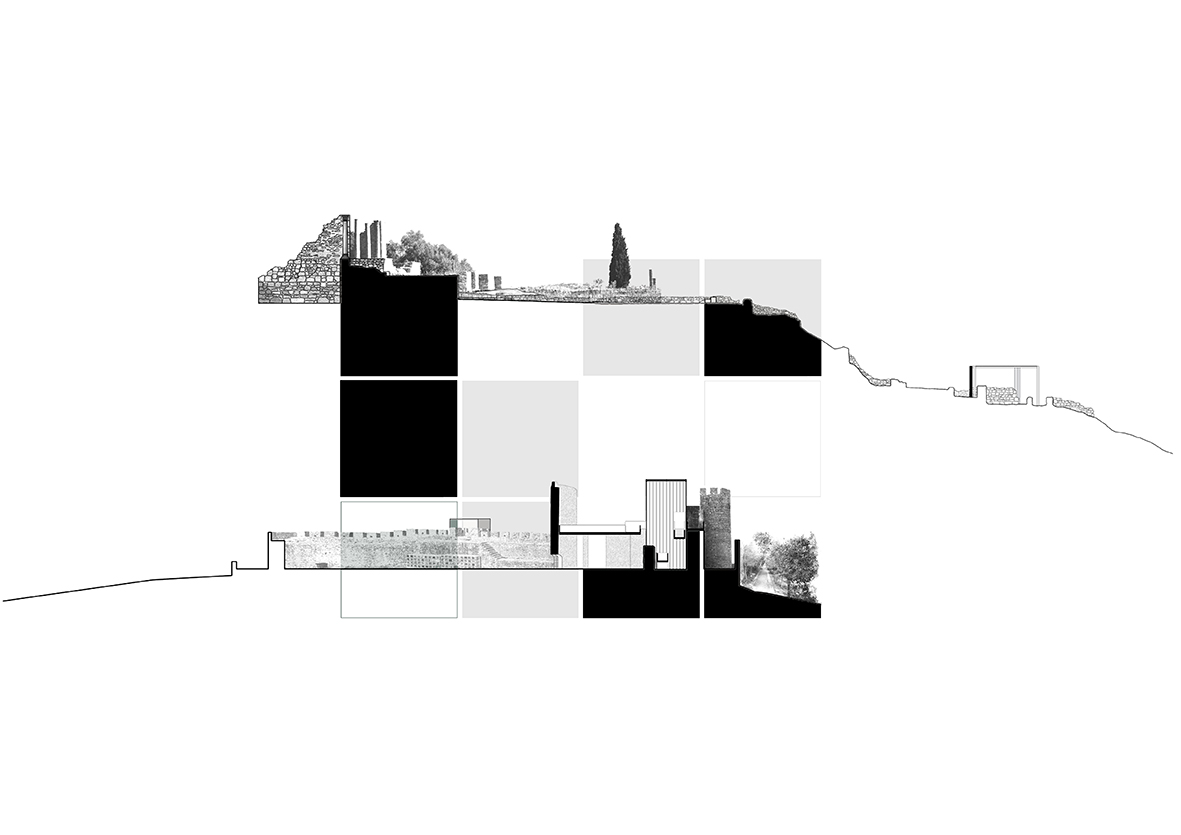
From Celtic to Roman city under the name of Miròbriga, one of the most important centers of Lusitania, abandoned and then used as a quarry, it was transformed by the Arabs into a fortified center. With the arrival of Christians, the city becomes a rural center, in which the archaeological heritage is an “intangible” layer, waiting to be integrated within the contemporary fabric. What remains tangibly is the stratification of the different elements characterizing the heritage, accompanied by a dense network of memories, symbol of the multiple identities of the place. It is precisely the stratification of the heritage, the main point from which to start a reactivation of the abandoned city, in which the diachrony between space and time determines a condition of suspension.
The research work aims to interpret the complexity of urban relations, determining hybrid configurations, in which it is precisely on the ways of a possible continuity between public and archaeological space, on the thresholds and limits, that the destinies of the contemporary city are at stake. The design experimentation proposes a strategy in which Santiago do Cacém becomes a centrality, connected to the territorial and urban system. Archaeological and natural paths, infrastructural connections, punctual and widespread grafts, become elements of an unitary gaze, able to reconfigure entire sections of the city and to reveal new tensions for the future.
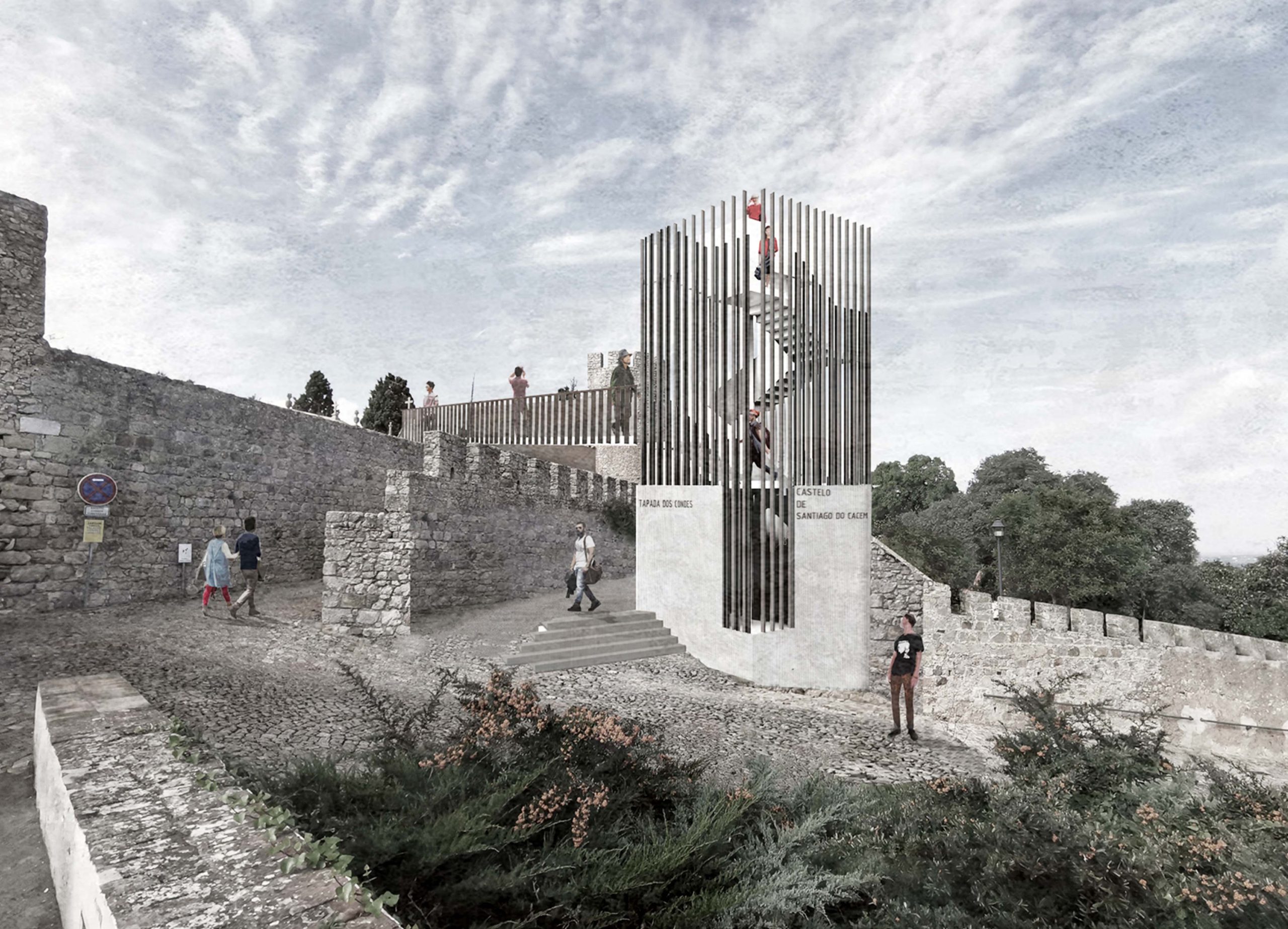
Two are the focal points of the strategy, which identify a complex plot, that from the city accompanies the user to the archaeological space: the area of the Arab Castle, currently the municipal cemetery, and the archaeological area of Miròbriga, among the most important Roman cities in southern Portugal. For the castle area, the project proposes the graft of a contemporary museum, a tower that rebuilds the old spatiality, allowing the historical knowledge, but also the enjoyment of the landscape. The castle, through a path that networks it with other ruins widespread along the hillside, is reconnected to the current station, which accommodates contemporary uses and becomes a reference point for tourism.
A pedestrian-cycle path also leads to Miròbriga site. Here, the project proposes a rethink of the current museum, with a contemporary graft capable of incorporating the roman domus, still underground. A widespread museum that holds together the archaeological fragments exploded and which goes on, becoming an open-air museum. The external archaeological path is a continuation of the museum, through punctual architectural devices that change in time and space, accompanying the excavation in progress to offer an ever-changing experience of the place.
In both projects, ruin constitutes the element from which to start for a possible reactivation of the decaying city, the core of an archaeological and urban park, which is destined to change contextually to the city.
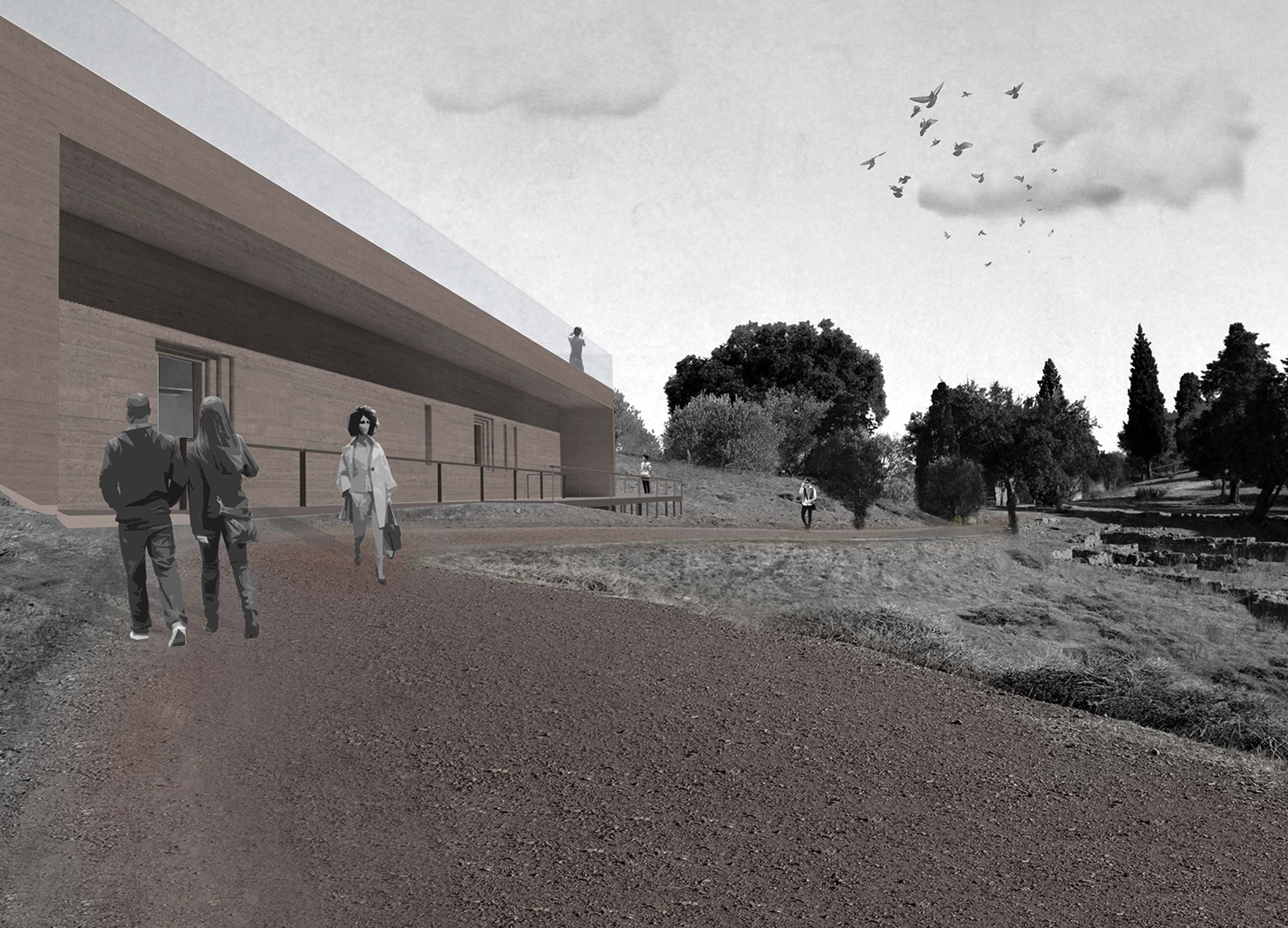
The Board:
